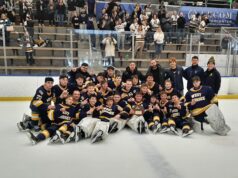Tom Bramble was in Canberra for the release of his new book Trade Unionism in Australia: From flood to ebb tide (Cambridge University Press Melbourne September 2008 293 pp).
John Passant was there.
Bramble argues that the union movement’s problems stem for a crisis of leadership and the concentration of power in the hands of that leadership at the expense of rank and file members.
He agrees that industries and their role in the economy change over time. There is nothing new in this. It has been happening since the dawn of capitalism and unions have managed in the past to adjust and build. In any event industries like manufacturing, building and transport are still key areas of the Australian economy.
In the 60s and 70s especially, the public service began to expand. Public Servants unionised through the actions of committed unionists building their unions through argument, discussion and strikes.
As health care and education grew, nurses and teachers built strong unions through the actions of committed unionists and strikes over pay and conditions.
At their peak unions had a membership of about 60 per cent of the workforce. Today it is less than 20 per cent.
The changing nature of the workforce it is not an argument that explains this decline. The problem is not the restructuring of the workforce per se, but the response of the present leadership and their dominant do nothing ideology.
Tom talked at length about the class collaborationist Accord, favouring Capital at the expense of Labor. It could only be sold to other militants by (former) militant leaders with real respect in the workforce. The Accord saw the union leadership become a cop for capital, quashing strikes and trading off conditions won through years of struggle for pathetic pay increases.
Bramble made the point that while it is not a one to one relationship the decline in membership closely mirrors the decline in strike activity over the last 25 years.
All is not lost. People are thirsting for change. Bramble asked why did 500,000 people join the first demo against Workchoices? Why did we vote Howard out? He argues if the union movement had mobilised workers to take industrial action against Howard’s Workchoices Rudd and Gillard would not have been able to get away with Workchoices Lite. He thought that the HowRuddistas were keeping about 90% of Howard’s anti-worker industrial laws.
The history of the Australian trade union movement is not one of unrelenting bleakness. It has had golden periods of sustained struggle and victories, and even in the darkest periods there are pockets of resistance that break out to challenge the conservative industrial relations orthodoxy (do nothing) of our paid union officials. Bramble shows that when unions take concerted industrial action with strong rank and file involvement, membership increases along with real wages. Workers join unions so they themselves can control to some extent their workplace and get better pay and defend their jobs. They don’t join unions for cheap cinema tickets.
Rank and file control and militancy hold the key to the successful regeneration of the union movement in Australia.
As Bramble argues in his book: “At the heart of rebuilding membership lies the capacity to organise and struggle. Creating organisations that can rebuild such traditions of militancy is the crucial element in the struggle today to revive Australian unionism”.
Tom Bramble is a member of Socialist Alternative www.sa.org.au or email [email protected]






